| Earliest Americans Printable Outline |
|---|
| www.studenthandouts.com ↣ U.S. History ↣ Early America ↣ Early America Outlines & PowerPoints |
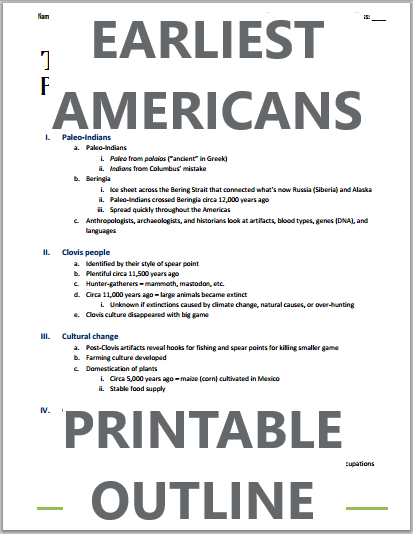 I. Paleo-Indians
I. Paleo-Indiansa. Paleo-Indians i. Paleo from palaios ("ancient" in Greek) ii. Indians from Columbus' mistake b. Beringia i. Ice sheet across the Bering Strait that connected what's now Russia (Siberia) and Alaska ii. Paleo-Indians crossed Beringia circa 12,000 years ago iii. Spread quickly throughout the Americas c. Anthropologists, archaeologists, and historians look at artifacts, blood types, genes (DNA), and languages II. Clovis people a. Identified by their style of spear point b. Plentiful circa 11,500 years ago c. Hunter-gatherers—mammoth, mastodon, etc. d. Circa 11,000 years ago—large animals became extinct i. Unknown if extinctions caused by climate change, natural causes, or over-hunting e. Clovis culture disappeared with big game III. Cultural change a. Post-Clovis artifacts reveal hooks for fishing and spear points for killing smaller game b. Farming culture developed c. Domestication of plants i. Circa 5,000 years ago—maize (corn) cultivated in Mexico ii. Stable food supply IV. Civilization a. Stable food supply = permanent settlements b. Excess food supply = job specialization i. Builders, leaders, organizers, potters, weavers, etc. c. Civilization i. Complex culture, centered around cities, with people working at specialized occupations who operate under complex government V. The Olmec a. Developed circa 1500 B.C.E. along the Gulf of Mexico (a.k.a. Gulf of America) b. Mesoamerican civilizations' "mother culture" c. Earthen temple mounds d. Earliest American written language e. Cultural diffusion through trade VI. The Maya a. Developed in modern-day Guatemala b. Civilization but not an empire—each religious center (city) independent c. Achievements i. Knowledge of astronomy—developed a calendar ii. Mathematics—invented a symbol for zero iii. Religiously significant rubber ball game with stone-walled playing courts d. Declined circa 900 C.E. but culture survived throughout Central America and Yucatan VII. Review questions a. How and when did Paleo-Indians first arrive in the Americas? b. What tools and evidence do historians use to understand the past in the absence of written records? c. Who were the Clovis people? d. When and where was maize (corn) first cultivated? e. How does agriculture lead to civilization? f. What did the Olmec contribute to civilization? g. What did the Maya contribute to civilization? VIII. Teotihuacan a. Built circa 300 C.E. in the Valley of Mexico i. Planned city was one of the world's largest ii. Neighborhoods arranged by societal role, etc. b. Political and religious structure i. Priest-rulers ii. Numerous gods, such as Quetzalcoatl iii. Sacrifices of agricultural products, animals, and humans c. 750 C.E.—city ended violently IX. Aztecs a. Invaders from what is now northern Mexico b. Circa 1325—settled on Lake Texcoco c. Aztec empire covered most of what is now Central Mexico d. 1450—period of drought and famine brought on massive amounts of human sacrifice e. By 1500—recovery with population of approximately 250,000—world's most populous city X. Hohokam a. Located in the southwestern American desert b. Irrigation—dams collected water and canals carried water to crops c. Agriculture—"Three Sisters"—beans, corn, and squash d. Declined circa 1300 XI. Anasazi a. Located on the Colorado plateau b. Practiced irrigation farming alongside hunting and gathering c. Towns built into sides of canyons i. Pueblo Bonito in what is now Chaco Canyon, New Mexico—trading center d. Declined circa 1300 XII. Hopewell a. Located in North American Eastern Woodlands b. Circa 500 B.C.E.-700 C.E.—Hopewell culture in Ohio Valley c. Mound-builders—leaders buried in large earthen mounds d. Circa 700 C.E.—large defensive earthworks last evidence of this culture XIII. Mississippian culture a. Developed in Mississippi Valley and southeast portion of what is now the United States, along flood plains b. Distinctive feature—flat-topped mounds c. Cahokia i. Located in modern-day western Illinois ii. Over 100 mounds iii. Population approximately 30,000 d. Remnants of Mississippian culture survived to 1700 XIV. Review questions a. What was Teotihuacan and how did it operate? b. Describe the world's most populous city in 1500 and the people who lived there. c. What were the "Three Sisters"? d. Describe the towns of the Anasazi. e. Where was the Hopewell culture located? f. Describe Cahokia and the people who lived there. g. Based on your knowledge of Native American cultures, what causes cultures and civilizations to rise and fall? Explain. Click here to print. Click here for a PowerPoint version of this outline. |
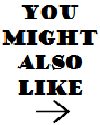 | 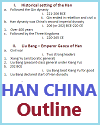 | 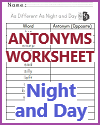 | 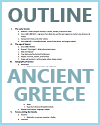 | 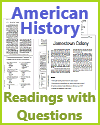 | 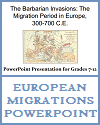 |
| Early America Books and Films | Early America Image Galleries |
| Early America Learning and Study Games | Early America Miscellany |
| Early America Outlines and PowerPoints | Early America Worksheets |
| www.studenthandouts.com ↣ U.S. History ↣ Early America ↣ Early America Outlines & PowerPoints |








